Papers by vincenzo antignani
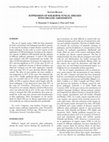
Journal of Plant Pathology, 2007
The use of organic matter (OM) has been proposed, for both conventional and biological agricultur... more The use of organic matter (OM) has been proposed, for both conventional and biological agriculture systems, to decrease the incidence of plant diseases caused by soilborne pathogens. In this work we review reports on the application of OM amendments, focusing on the suppressive capacity of different OM materials and the response of different soilborne pathogens. A total of 250 articles were analysed, with 2423 experimental case studies. The effect of OM amendments was found to be suppressive in 45% and non-significant in 35% of the cases. In 20% of the cases, a significant increase of disease incidence was observed. Compost was the most suppressive material, with more than 50% of cases showing effective disease control. The effect of crop residues was more variable: it was suppressive in 45% of the cases, but enhanced disease in 28%. Finally, significant disease suppression with peat was recorded only in 4% of the experiments. The ability of OM to suppress disease varied largely with different pathogens: it was observed in more than 50% of the cases for Verticillium, Thielaviopsis, Fusarium and Phytophthora. In contrast, effective control of Rhizoctonia solani was achieved only in 26% of the cases. From this review it emerged that OM amendments have great potential but, at the same time, present some inconsistencies in their application. More investigation on the mechanisms by which OM acts on disease suppression is needed to make the use of these materials more predictable.
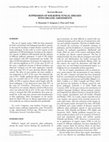
The use of organic matter (OM) has been proposed, for both conventional and biological agricultur... more The use of organic matter (OM) has been proposed, for both conventional and biological agriculture systems, to decrease the incidence of plant diseases caused by soilborne pathogens. In this work we review reports on the application of OM amendments, focusing on the suppressive capacity of different OM materials and the response of different soilborne pathogens. A total of 250 articles were analysed, with 2423 experimental case studies. The effect of OM amendments was found to be suppressive in 45% and non-significant in 35% of the cases. In 20% of the cases, a significant increase of disease incidence was observed. Compost was the most suppressive material, with more than 50% of cases showing effective disease control. The effect of crop residues was more variable: it was suppressive in 45% of the cases, but enhanced disease in 28%. Finally, significant disease suppression with peat was recorded only in 4% of the experiments. The ability of OM to suppress disease varied largely with different pathogens: it was observed in more than 50% of the cases for Verticillium, Thielaviopsis, Fusarium and Phytophthora. In contrast, effective control of Rhizoctonia solani was achieved only in 26% of the cases. From this review it emerged that OM amendments have great potential but, at the same time, present some inconsistencies in their application. More investigation on the mechanisms by which OM acts on disease suppression is needed to make the use of these materials more predictable.

ABSTRACT Disease problems resulting from replanting alfalfa (Medicago sativa, MS) have been assoc... more ABSTRACT Disease problems resulting from replanting alfalfa (Medicago sativa, MS) have been associated both to autotoxicity of undecomposed plant residues and activity of soil-borne fungal pathogens such as Pythium spp. and Rhizoctonia solani. However, the interaction between MS residues and soil-borne pathogens has not been previously investigated. In this work we studied the effects of the decomposition process of MS residues, in aerobic and anaerobic conditions on: (i) the growth of MS seedlings; (ii) the growth of 17 fungal species selected among saprophytic, biological control agents, foliar and soil-borne pathogens and (iii) the outcome of the plant-pathogen interactions. MS chemical changes during decomposition were characterized by 13C-CPMAS- NMR spectroscopy. Autotoxicity and phytotoxicity of MS extracts rapidly decreased during decomposition, in both laboratory and litterbag in aerobic conditions, but increased sharply in anaerobic conditions. Undecomposed MS extracts positively affected fungal growth, while extracts from MS residues decomposed both in aerobic and anaerobic conditions showed an inhibitory effect. MS seedling damping-off caused by Pythium ultimum and R. solani increased when soil was amended with MS residues, suggesting that availability of more nutrients and energy sources may be important in increasing disease severity. 13C-CPMAS-NMR analysis revealed that dramatic chemical changes occurred during decomposition. O-bearing carbon compounds, mainly associated with sugars, decreased steadily, while aliphatic compounds increased during decomposition. It was concluded that there is a consistent relationship among MS chemical changes, its autotoxicity and the effects on fungal growth.

Phytochemistry, 2012
A bioassay-guided phytochemical analysis of the polar extract from the bulbs of garlic, Allium sa... more A bioassay-guided phytochemical analysis of the polar extract from the bulbs of garlic, Allium sativum L., var. Voghiera, typical of Voghiera, Ferrara (Italy), allowed the isolation of ten furostanol saponins; voghieroside A1/A2 and voghieroside B1/B2, based on the rare agapanthagenin aglycone; voghieroside C1/C2, based on agigenin aglycone; and voghieroside D1/D2 and E1/E2, based on gitogenin aglycone. In addition, we found two known spirostanol saponins, agigenin 3-O-trisaccharide and gitogenin 3-O-tetrasaccharide. The chemical structures of the isolated compounds were established through a combination of extensive nuclear magnetic resonance, mass spectrometry and chemical analyses. High concentrations of two eugenol diglycosides were also found for the first time in Allium spp. The isolated compounds were evaluated for their antimicrobial activity towards two fungal species, the air-borne pathogen Botrytis cinerea and the antagonistic fungus Trichoderma harzianum.
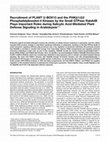
The Plant cell, Jan 29, 2015
Protection against microbial pathogens involves the activation of cellular immune responses in eu... more Protection against microbial pathogens involves the activation of cellular immune responses in eukaryotes, and this cellular immunity likely involves changes in subcellular membrane trafficking. In eukaryotes, members of the Rab GTPase family of small monomeric regulatory GTPases play prominent roles in the regulation of membrane trafficking. We previously showed that RabA4B is recruited to vesicles that emerge from trans-Golgi network (TGN) compartments and regulates polarized membrane trafficking in plant cells. As part of this regulation, RabA4B recruits the closely related phosphatidylinositol 4-kinase (PI4K) PI4Kβ1 and PI4Kβ2 lipid kinases. Here, we identify a second Arabidopsis thaliana RabA4B-interacting protein, PLANT U-BOX13 (PUB13), which has recently been identified to play important roles in salicylic acid (SA)-mediated defense signaling. We show that PUB13 interacts with RabA4B through N-terminal domains and with phosphatidylinositol 4-phosphate (PI-4P) through a C-term...
Human Ecology, 2009
The Phlegraean Fields Regional Park in southern Italy has an especially long history of human exp... more The Phlegraean Fields Regional Park in southern Italy has an especially long history of human exploitation. For our ethnobotanical studies we interviewed 39 people native to the area and recorded 962 use-reports. For each species, we provide scientific and vernacular names, plant parts used, and preparation and administration processes. In all, 69 species belonging to 35 families were classified. The species most frequently mentioned were Citrus limon, Chamomilla recutita, Malva sylvestris, Parietaria judaica, Ficus carica, Foeniculum vulgare and Laurus nobilis. The commonest plant use recorded is medicinal, followed by culinary and domestic; for 26% of the species inventoried, more than one use was recorded. The present study confirms the persistence of traditional plant use in regions of central and southern Italy.
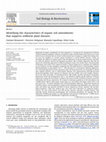
Soil Biology and Biochemistry, 2010
Application of organic amendments has been proposed as a strategy for the management of diseases ... more Application of organic amendments has been proposed as a strategy for the management of diseases caused by soilborne pathogens. However, inconsistent results seriously hinder their practical use. In this work we use an extensive data set of 2423 studies derived from 252 papers to explore this strategy. First, we assess the capability of a specific organic amendment to control different diseases; second, we investigate the influence of organic matter (OM) decomposition on disease suppressiveness; and third, we search for physical, chemical and biological parameters able to identify suppressive OM. OM was found to be consistently suppressive to different pathogens in only a few studies where a limited number of pathogens were tested. In the majority of studies a material suppressive to a pathogen was ineffective or even conducive to other pathogens, suggesting that OM suppressiveness is often pathogen-specific. OM decomposition in many studies (73%, n ¼ 426) emerged as a crucial process affecting suppressiveness. During decomposition, disease suppression either increased, decreased, was unchanged or showed more complex responses, such as 'hump-shaped' dynamics. Peat suppressiveness generally decreased during decomposition, while responses of composts and crop residues were more complex. However, due to the many interactions of contributing factors (OM quality, microbial community composition, pathosystem tested and decomposition time), it was difficult to identify specific predictors of disease suppression. Among the 81 parameters analysed, only some of the 643 correlations showed a consistent relationship with disease suppression. The response of pathogen populations to OM amendments was a reliable feature only for some organic matter types (e.g. crop residues and organic wastes with C-to-N ratio lower than w15) and for pathogens with a limited saprophytic ability (e.g., Thielaviopsis basicola and Verticillium dahliae). Instead, population responses of the pathogenic fungi Phytophthora spp., Rhizoctonia solani and Pythium spp. appeared unrelated to disease suppression. Overall, enzymatic and microbiological parameters, rather than chemical ones, were much more informative for predicting suppressiveness. The most useful features were FDA activity, substrate respiration, microbial biomass, total culturable bacteria, fluorescent pseudomonads and Trichoderma populations. We conclude that the integration of different parameters (e.g. FDA hydrolysis and chemical composition by 13 C NMR) may be a promising approach for identification of suppressive amendments.
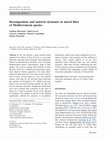
Plant and Soil, 2010
In the last decade a great research effort addressed the effects of litter diversity on ecosystem... more In the last decade a great research effort addressed the effects of litter diversity on ecosystem functions, reporting both synergistic and antagonistic effects for decomposition dynamics. Four coexisting Mediterranean species, representing a range of litter quality, were used to arrange litter mixtures at three diversity levels for a litterbag decomposition experiment. Species identity appeared as the major determinant for litter mass loss (Coronilla emerus∼Hedera helix>Festuca drymeia>Quercus ilex) and nutrient release, with rates for all leaf litter types following the sequence K>N>Mg≥Ca>>Fe. Additive diversity effects were prevalent pooling together all data but also for nutrients separately. Antagonistic interactions were more common than synergistic in the cases of mass loss, N and Ca contents, but not for K, Mg and Fe dynamics. The number of species in the litterbag significantly affected the outcome of non-additive interactions, which were mostly antagonistic for twospecies mixtures, and synergistic for the combined 4 species. Litter quality appears to be the most important factor affecting mass loss and nutrient dynamics, while litter diversity, influencing the rates of these processes, plays an important role in reducing their variability, thus suggesting a greater stability of ecosystems properties in presence of mixed litter.
Phytochemistry, 2007
Three saponins, named minutoside A (1), minutoside B (2), minutoside C (3), and two known sapogen... more Three saponins, named minutoside A (1), minutoside B (2), minutoside C (3), and two known sapogenins, alliogenin and neoagigenin, were isolated from the bulbs of Allium minutiflorum Regel. Elucidation of their structure was carried out by comprehensive spectroscopic analyses, including 2D NMR spectroscopy and mass spectrometry. The structures of the new compounds were identified as
Nova Hedwigia, 2008
ABSTRACT
Molecular Plant-Microbe Interactions, 2013
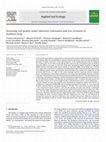
APPLIED SOIL ECOLOGY, 2011
Concerns about groundwater contamination as well as pesticide residues in food and soil have fuel... more Concerns about groundwater contamination as well as pesticide residues in food and soil have fuelled vigorous debates about the sustainability of chemical-intensive agriculture. Search has been prompted for agronomic strategies with lower environmental hazards. In this multidisciplinary study we compared the characteristics of soils from 20 agricultural farms selected in five geographical areas of Southern Italy with different soil types. In each farm, fields with management regime classified as high-input (HIMR, intensive cultivation under plastic tunnels) or low-input (LIMR, tree orchards) were selected. Soil samples were analyzed for 31 parameters including physical and chemical properties (bulk density, water holding capacity, texture, pH, limestone, electrical conductivity, organic C to a depth of 0-20 and 20-40 cm, total N, P 2 O 5 , Ca 2+ , Mg 2+ , K + , Na + , cation exchange capacity), enzymatic activities (dehydrogenase, arylsulphatase, -glucosidase, phosphatase and urease) and microbiological features (potential respiration, functional diversity of microbial populations by BIOLOG EcoPlates TM , microbial biomass, fungal mycelium, culturable actinomycetes, bacteria and fungi, pseudomonads and bacterial species richness by 16S rDNA-DGGE). Finally, a soil bioassay was performed in order to evaluate the plant growth of a biotest plant (Lactuca sativa) and soil suppressiveness of the Rhizoctonia solani-L. sativa pathosystem.
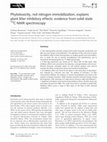
The New phytologist, 2011
Litter decomposition provides nutrients that sustain ecosystem productivity, but litter may also ... more Litter decomposition provides nutrients that sustain ecosystem productivity, but litter may also hamper root proliferation. The objectives of this work were to assess the inhibitory effect of litter decomposition on seedling growth and root proliferation; to study the role of nutrient immobilization and phytotoxicity; and to characterize decomposing litter by (13)C NMR spectroscopy. A litter-bag experiment was carried out for 180 d with 16 litter types. Litter inhibitory effects were assessed by two bioassays: seed germination and root proliferation bioassays. Activated carbon (C) and nutrient solutions were used to evaluate the effects of phytotoxic factors and nutrient immobilization. An inhibitory effect was found for all species in the early phase of decomposition, followed by a decrease over time. The addition of activated C to litter removed this inhibition. No evidence of nutrient immobilization was found in the analysis of nitrogen dynamics. NMR revealed consistent chemical ...











Uploads
Papers by vincenzo antignani